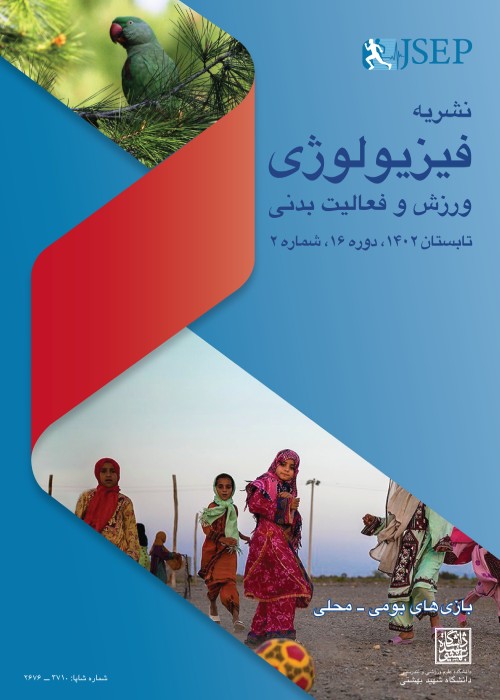The effect of 8 weeks of High Intensity Interval Training on the Levels of Wnt and NF-κB proteins in the heart tissue of male Wistar rats with type 2 diabetes
Diabetic cardiomyopathy is one of the main risk factors for cardiovascular complications of diabetes and since physical activity in diabetic patients can affect the structure and function of the myocardium, the aim of the present study was to investigate the effect of eight weeks of HIIT training on the content of NF-kB and Wnt proteins in the heart muscle tissue of Wistar rats with type 2 diabetes.
In the present study, 20 male Wistar rats were randomly divided into four groups (each group including five rats) Control+Healthy, Exercise+Healthy, Control+Diabetes, and Exercise+Diabetes. After a period of high-fat diet and then after induction of diabetes, animals in Exercise+Diabetes and Exercise+Healthy groups performed the training protocol for eight weeks and five sessions per week. 48 hours after the last training session, cardiac tissue was extracted and the expression levels of NF-kB and Wnt proteins were assessed using Western blotting. Data were analyzed using one-way ANOVA and Tukey post hoc test at a significance level of less than 0.05. Also, mixed ANOVA test was used to evaluate changes in weight and glucose levels of rats in different stages and weeks of training.
The results showed that the relative Levels of NF-kB and Wnt proteins in Control+Diabetes and Exercise+Eiabetes groups is significantly more than healthy groups (P = 0.001). Also, the Levels of Wnt protein in the Exercise+Diabetes group was significantly less than the Control+Diabetes group (P = 0.001), While the Levels of NF-κB protein in the Exercise+Diabetes group did not show a significant difference compared to the Control+Diabetes group. The results of mixed ANOVA test on mean weight changes show that the weight of rats in Control+Diabetes and Exercise+Diabetes groups was significantly higher (P = 0.001) than the beginning of training and use of high-fat diet to the stage before STZ injection and in the last week. In addition, at the end of the training protocol was significantly became less (P = 0.001). Also, blood glucose levels of Control+Diabetes and Exercise+Diabetes groups was significantly higher (P = 0.001 and 0.003, respectively) at one week after STZ injection and was significantly lower in the Exercise+Diabetes group at the end of the training protocol (P=0.001).
Finally, it should be noted that high-intensity intermittent exercise could potentially affect myocardial structure and function and be promising as a non-pharmacological solution.
- حق عضویت دریافتی صرف حمایت از نشریات عضو و نگهداری، تکمیل و توسعه مگیران میشود.
- پرداخت حق اشتراک و دانلود مقالات اجازه بازنشر آن در سایر رسانههای چاپی و دیجیتال را به کاربر نمیدهد.



